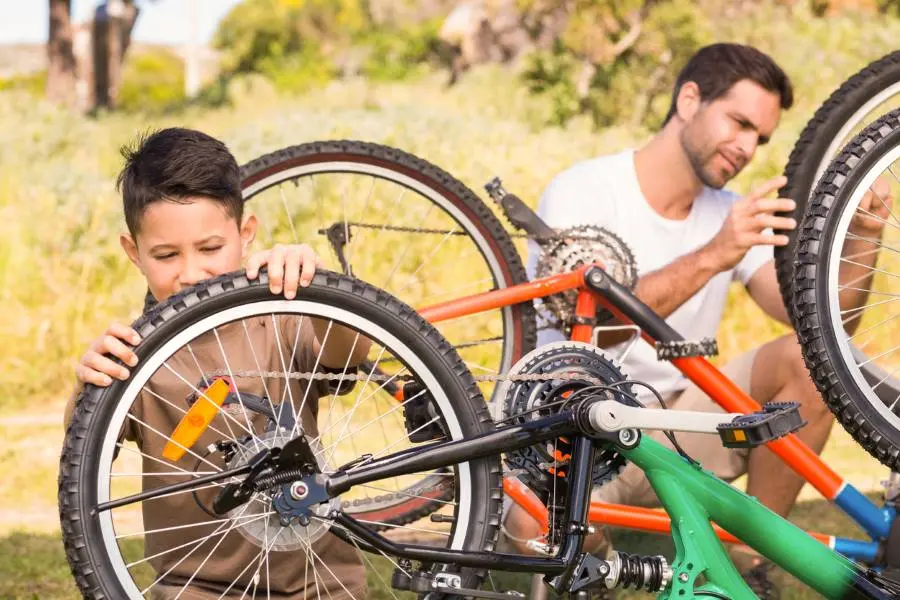
How to Keep Your Summer Gear in Pristine Condition
July 25, 2023 | Lifestyle
As an outdoor sports enthusiast, you undoubtedly have specialized gear and equipment that require regular maintenance to ensure optimal performance and longevity. Tossing your summer gear aside in anticipation of winter sports may be tempting. But quality recreational gear can command a premium price, so caring for it helps protect your investment.
Outdoor activities such as mountain biking, fly fishing, rope climbing, and camping are undoubtedly more enjoyable with reliable and durable gear. These and many other sports require specific equipment unique to their sport.
Here are some tips to keep your summer gear in tip-top shape so it’s ready when you are for your next big outdoor adventure.
Mountain Bikes
Whether you’re a beginner mountain biker or on your way to going pro, maintaining your bike is essential for getting the most out of the trails and your safety. The complexity and price point of your bike, designed specifically for its sport—Cross Country (XC), All Mountain (Enduro), Downhill (DH), and Trail—will guide you on the frequency of need to repair and replace parts.
Start a good maintenance routine by cleaning your bike after every ride by removing dirt, mud, and debris that can cause wear and corrosion. You’ll want to regularly lubricate your bike’s chain, derailleurs, and cables to ensure smooth shifting. Before each ride, quickly inspect your tires for cuts or wear and ensure they are adequately inflated for optimal traction.
Regularly check and adjust your bike’s brakes to ensure they stay responsive, and check the wear on the pads every few rides. A local bike mechanic can inspect suspension components for any signs of damage or leaks and service them as the manufacturer recommends.
Finally, periodically inspect the frame, wheels, and other components for cracks, dents, or loose bolts. Mountain biking can be dangerous, so a good maintenance routine will help ensure your safety in addition to protecting your investment.
Surfboards
Surfboards come in all sizes, shapes, and a variety of materials. As a result, expensive boards, like custom hollow wooden surfboards, can cost tens of thousands of dollars. However, polyurethane (poly) boards and epoxy boards make up the majority of surfboards sold and are easier to repair and more durable than soft-top boards.
Maintaining your surfboards requires some specific care to preserve their beauty and performance. Simple steps like rinsing off saltwater and thoroughly drying and storing it after each use will go a long way to keeping it damage-free.
Most of your board’s dents and dings come from sources outside the water. So invest in a bag for your board to protect it while traveling to your favorite places to surf. Repairing any dings or cracks as soon as you see them will help prevent delamination, which can lead to more costly repairs.
It may seem counterintuitive to the layperson, but surfers know the importance of waxing the deck. The right wax will give you the grip you need, so be sure to buy wax based on the water temperature you’re surfing in. Remove the old built-up wax once a season (or more if necessary) and supply a fresh coat. Doing this ensures your new coats of wax will stick.
Tents
Besides mountain bikes, camping gear is exposed to dirty, muddy, and sometimes rainy conditions. Your camping gear may include a combination of tents, sleeping bags, stoves, and backpacks and should also be properly maintained to ensure they remain functional and durable.
If your tent is exposed to any moisture, it’s essential to unfurl it in a protected location to dry out once you get home. Otherwise, it’s likely to get moldy. If camping conditions are dry, start by shaking off any loose debris. You can use a soft brush to gently scrub the tent’s interior to remove any residual dirt.
Inspect your tent once a year for any signs of damage, such as tears, punctures, or damaged poles. You can purchase repair patches online or from your local sports retailer designed specifically for tents.
To store your tent, avoid compressing it too tightly, as it can damage the fabric or compromise the waterproofing. If you need more space in your garage, consider storing your tent and other outdoor equipment at your local Metro Self Storage. We offer various recreational storage units and prices to meet your needs.
Golf Clubs
Golf clubs need regular cleaning to remove dirt, grass, and debris. Thankfully it’s a simple task, and you only need to clean the clubs you use. Not doing so can lead to dirt and grass building up in the grooves of your clubs, eventually causing rust and corrosion.
Golf clubs can last anywhere from 3 to 10 years, with drivers needing to be replaced most often. Dirty clubs can also significantly impact your game, so maintaining them will help ensure consistent performance on the course. After every 3 to 4 rounds, clean your clubs using a damp cloth or brush to remove dirt, grass, and debris.
Store your clubs in a cool, dry place, preferably in a golf bag with individual club dividers to prevent damage. Periodically have your clubheads, shafts, and grips inspected for any signs of wear or damage and address them accordingly.
Climate-Controlled and Drive-Up Access Gear Storage

When you store your outdoor gear with Metro, you’ll find amenities and features that cater to your outdoor lifestyle. Our outdoor equipment storage units are ideal for camping, backpacking, skiing, kayaking, surfing gear, and more.
Our facilities are designed with your convenience in mind, including state-of-the-art security. It’s easy to rent your unit online, and with flexible month-to-month leasing, you can downsize or upsize your unit anytime.
Since opening our first storage facility in 1973, Metro Self Storage has become one of the country’s most respected storage providers. Visit Metro Self Storage to learn more about your outdoor storage options.



